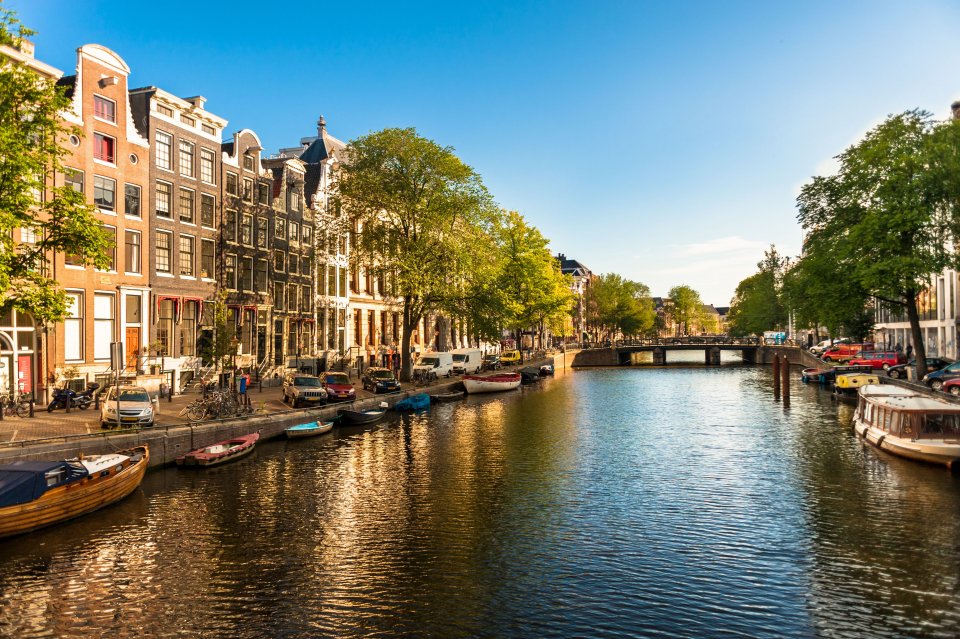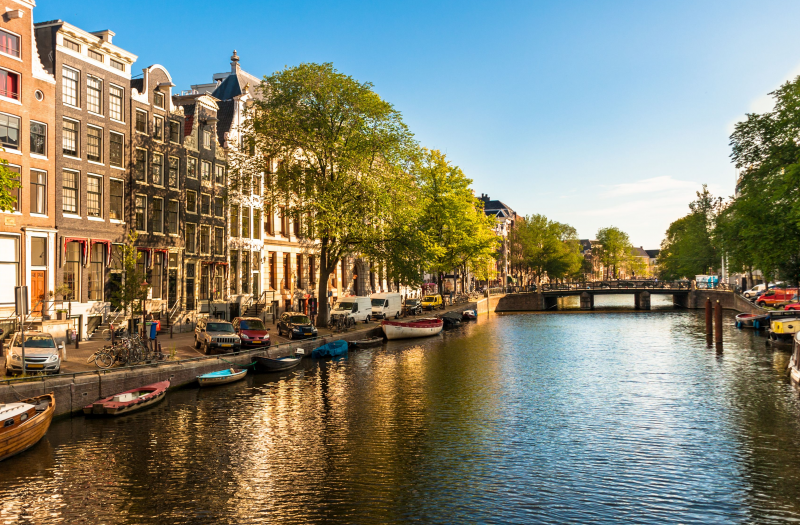Amsterdam - NbS for greening the city and increasing resilience

The 2010 city-region plan ‘Structural Vision: Amsterdam 2040’, managed by the Department of Physical Planning, set the investment and project ambitions for the period 2010-2040. The strategy seeks to fulfil the vision of a creative and varied city, with an integrated public transport network, high quality urban planning, and investment in recreational green spaces, water and renewable energies. Water-related hazards, such as floods and storm surges, are managed at all levels - city, regional and national. The ‘Agenda Groen 2015-2018’ (Green Agenda 2015-2018) includes specific ‘Nature Based Solutions’ as part of the Structural Vision.
Amsterdam hosts a variety of green-space initiatives, ranging from community parks to city-wide projects to bring about a considerable increase of green spaces.
City parks
City parks are used for all kinds of recreation: walking, sports, work, enjoyment of nature, etc....
- The AMS Climadaptool project (a project of the Amsterdam Institute for Advanced Metropolitan Solutions) developed a smartphone app which people can use to see what the local urban climate is like in their immediate environment, and what they can do to improve it.
- The Netherlands has a long tradition of protecting its land from the sea and from the rivers, its water management boards (Waterschappen) being the oldest governing bodies in the country.
- The city of Amsterdam provided a budget of 20 million euro for the Green Agenda 2015-2018. The public, not-for-profit organisations, companies and authorities had to invest money themselves to be able to obtain a subsidy. This co-financing approach was very successful, with in total more than 55 million euro being invested in a greener Amsterdam.
- In 2016, Amsterdam completed two green corridors, three natural playgrounds, 6 441 m2 of green roofs, six potage-stamp-sized parks, and six green schoolyards, and five city parks were renovated.
- i-Tree: a state-of-the-art, peer-reviewed software suite from the United States Department of Agriculture’s Forest Service that provides urban and rural forestry analysis and benefits assessment tools. A Dutch consortium involving 13 cities is introducing it in the Netherlands, enabling users to estimate the value of trees as a function of heat reduction.
- Delta Project is a foundation with an average annual budget of 1.2 billion euro up to 2028. At the national level, the annual budget for coastline management is 40 million euro for 12 million m3 sand per year. Per km, these costs are comparable to those of motorway maintenance.
Amsterdam hosts a variety of green space initiatives, ranging from community parks to city-wide projects seeking to considerably increase the amount of green space and green rooftops. These projects are often funded by the government, either directly or through citizen foundations or other non-...
Geertje Wijten, Ruimte en Duurzaamheid, Agenda Groen, City of Amsterdam, The Netherlands
